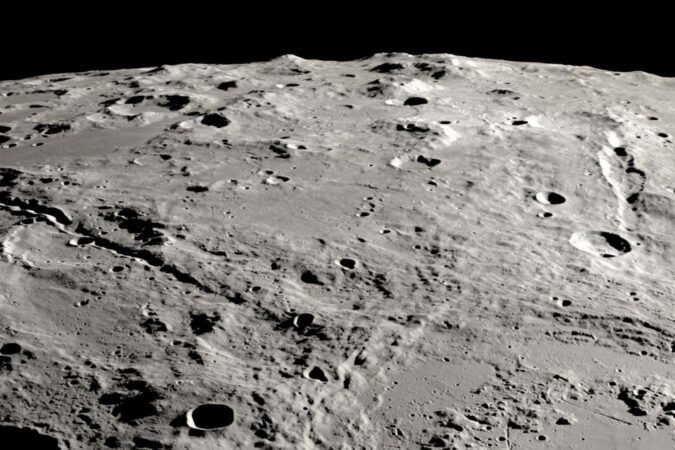Quick Takeaways
-
Impact Magnitude: The Schrödinger crater, caused by a high-velocity asteroid, released energy equivalent to 130 times all existing nuclear weapons upon impact.
-
Formation of Canyons: Two straight canyons, Vallis Schrödinger and Vallis Planck, were formed in under 10 minutes by secondary debris impacts from the initial asteroid strike.
-
Research Insights: Simulation studies suggested an asteroid impact approximately 3.81 billion years ago generated debris at velocities capable of creating the observed canyons on the moon’s surface.
- Future Lunar Missions: Findings provide reassurance for NASA’s Artemis III mission, indicating that ejected materials from the Schrödinger impact won’t significantly obstruct geological investigations in the planned landing areas near the south pole.
Asteroid Strike Shapes Moon’s Landscape
Recent research uncovers dramatic insights into the moon’s surface. A colossal asteroid struck the moon’s south pole, creating a vast impact crater called Schrödinger. This event released energy equivalent to 130 times all nuclear weapons combined. Significantly, it also formed two unique canyons in mere minutes.
David Kring, a researcher at the Lunar and Planetary Institute in Houston, Texas, has studied the Schrödinger crater for 15 years. He found two narrow canyons, known as rays, that extend from the crater’s center. “They’re basically hidden, in some sense mysterious,” said Kring. Their remote location on the far side of the moon typically keeps them overlooked.
Using advanced computer models, Kring and his team investigated the origins of these canyons. One canyon, Vallis Schrödinger, measures 270 kilometers long and 2.7 kilometers deep. Another, Vallis Planck, stretches 280 kilometers with a depth of 3.5 kilometers. For context, the Grand Canyon in Arizona is 446 kilometers long and 1.9 kilometers deep. Unlike the Grand Canyon, these lunar formations resulted from immense impact forces rather than water erosion.
The asteroid’s impact scattered dust and debris across the moon. Researchers suggest that secondary impacts created the canyons in less than 10 minutes. Fast-moving debris caused further cratering outside the main impact zone. “You have rock that’s hitting at a kilometer per second, maybe 2 kilometers per second, and that can be devastating,” Kring explained.
These findings are particularly relevant for NASA’s Artemis III mission, which aims to return astronauts to the moon. Crews plan to land near the Schrödinger crater, where the ejected lunar regolith is comparatively shallow. “The proposed landing spots won’t be deep enough to hinder geology experiments,” Kring noted. If they had chosen areas north of Schrödinger, they would encounter much thicker layers of debris.
Mark Burchell, a researcher at the University of Kent, supports the idea that the canyons formed through chains of impacts. He emphasized the need for closer investigation. “The ultimate proof would be someone bringing back a rock from one of these canyons,” he said. Analyzing such rocks could reveal mineral changes due to intense impacts.
This research not only advances our understanding of celestial impacts but also informs space exploration. As NASA prepares for future lunar missions, these insights can enhance safety and scientific study on the moon. The dynamic processes that shaped the moon’s canyons also hold lessons for technologies aiding exploration on other planets.
Discover More Technology Insights
Stay informed on the revolutionary breakthroughs in Quantum Computing research.
Access comprehensive resources on technology by visiting Wikipedia.
SciV1

